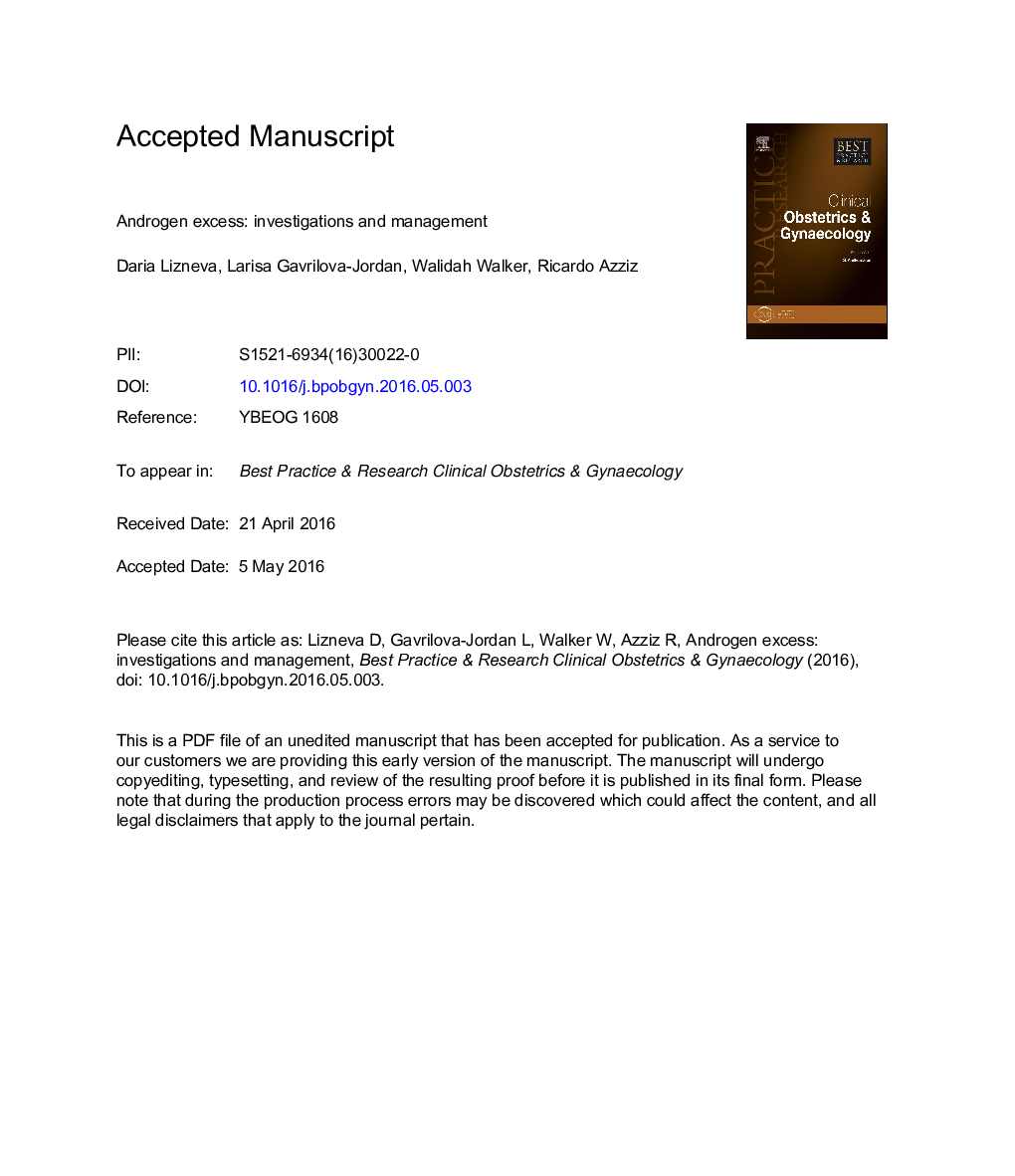| کد مقاله | کد نشریه | سال انتشار | مقاله انگلیسی | نسخه تمام متن |
|---|---|---|---|---|
| 5688760 | 1599303 | 2016 | 63 صفحه PDF | دانلود رایگان |
عنوان انگلیسی مقاله ISI
Androgen excess: Investigations and management
ترجمه فارسی عنوان
بیش از حد آندروژن: تحقیق و مدیریت
دانلود مقاله + سفارش ترجمه
دانلود مقاله ISI انگلیسی
رایگان برای ایرانیان
کلمات کلیدی
موضوعات مرتبط
علوم پزشکی و سلامت
پزشکی و دندانپزشکی
زنان، زایمان و بهداشت زنان
چکیده انگلیسی
Androgen excess (AE) is a key feature of polycystic ovary syndrome (PCOS) and results in, or contributes to, the clinical phenotype of these patients. Although AE will contribute to the ovulatory and menstrual dysfunction of these patients, the most recognizable sign of AE includes hirsutism, acne, and androgenic alopecia or female pattern hair loss (FPHL). Evaluation includes not only scoring facial and body terminal hair growth using the modified Ferriman-Gallwey method but also recording and possibly scoring acne and alopecia. Moreover, assessment of biochemical hyperandrogenism is necessary, particularly in patients with unclear or absent hirsutism, and will include assessing total and free testosterone (T), and possibly dehydroepiandrosterone sulfate (DHEAS) and androstenedione, although these latter contribute limitedly to the diagnosis. Assessment of T requires use of the highest quality assays available, generally radioimmunoassays with extraction and chromatography or mass spectrometry preceded by liquid or gas chromatography. Management of clinical hyperandrogenism involves primarily either androgen suppression, with a hormonal combination contraceptive, or androgen blockade, as with an androgen receptor blocker or a 5α-reductase inhibitor, or a combination of the two. Medical treatment should be combined with cosmetic treatment including topical eflornithine hydrochloride and short-term (shaving, chemical depilation, plucking, threading, waxing, and bleaching) and long-term (electrolysis, laser therapy, and intense pulse light therapy) cosmetic treatments. Generally, acne responds to therapy relatively rapidly, whereas hirsutism is slower to respond, with improvements observed as early as 3 months, but routinely only after 6 or 8 months of therapy. Finally, FPHL is the slowest to respond to therapy, if it will at all, and it may take 12 to 18 months of therapy for an observable response.
ناشر
Database: Elsevier - ScienceDirect (ساینس دایرکت)
Journal: Best Practice & Research Clinical Obstetrics & Gynaecology - Volume 37, November 2016, Pages 98-118
Journal: Best Practice & Research Clinical Obstetrics & Gynaecology - Volume 37, November 2016, Pages 98-118
نویسندگان
Daria MD, PhD, Larisa MD, Walidah MS, Ricardo MD, MPH,
